We Designed Our Own $5 Million Bugatti Mistral. Here’s How.

- Oops!Something went wrong.Please try again later.
- Oops!Something went wrong.Please try again later.
As a sendoff to Bugatti’s W16 motor, the French marque created the Mistral, a $5 million-plus roadster. For that price, you get a signature horseshoe grille, menacing LED lighting borrowed from the one-off $16.5 million La Voiture Noire, a squished-down version of the cove-like character line that flanks all Bugs, and some X-wing fighter–inspired taillights. What you don’t get is a top. Folded in a storage area is what Bugatti designer Jascha Straub describes as “a so-called emergency roof. Like an umbrella.”
If you purchased one of the 99 examples of the sold-out supercar, you also get the opportunity to personalize your vehicle with Straub, who runs the marque’s Sur Mesure individualization program, an expert means by which Bugatti can separate collectors from even more of their money. Though a small percentage of clients buy a car in a standard off-the-rack spec, most take advantage of the program, coming to the automaker’s headquarters in Molsheim to engage with the protocol.
More from Robb Report
YouTuber Supercar Blondie Is Launching an Online Auction Site for Rarified Rides
Car of the Week: This 1938 Bugatti Is an Art-Deco Dream That's Now up for Grabs
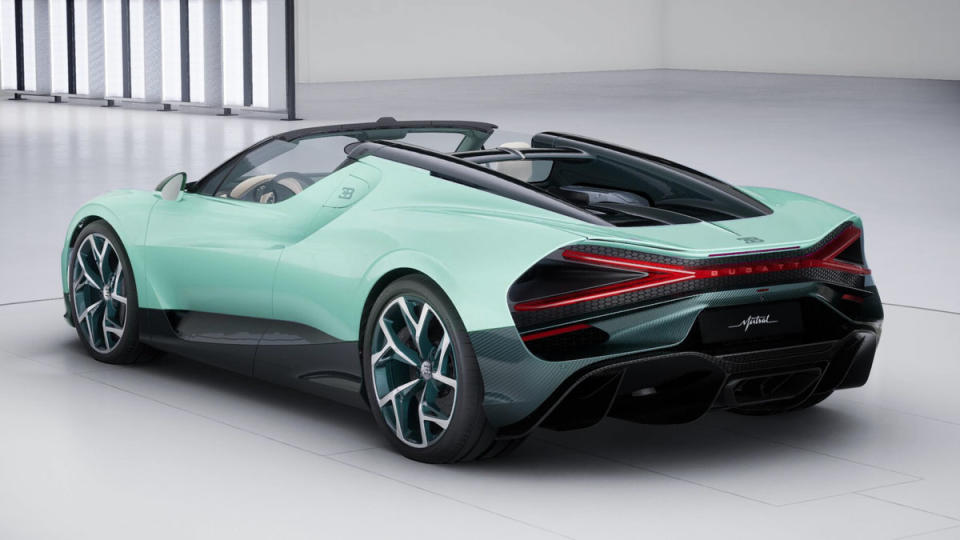
“There’s a proper journey behind the process, on site,” Straub says. “They see the historic buildings, the chateau of Ettore Bugatti. They see the historic cars in our collection. We go to the atelier . . . and they also get inspired by cars that are currently in production. And then we have lunch and start here with the configuration.”
I wasn’t able to jet out to Molsheim (there is a helicopter landing pad on-site for those that chopper in from the nearest private airport), but I was invited into the process via an hours-long video call with Straub. It’s somewhat akin to a psychological profiling, a Meyers Briggs for exotic-car cognoscenti.
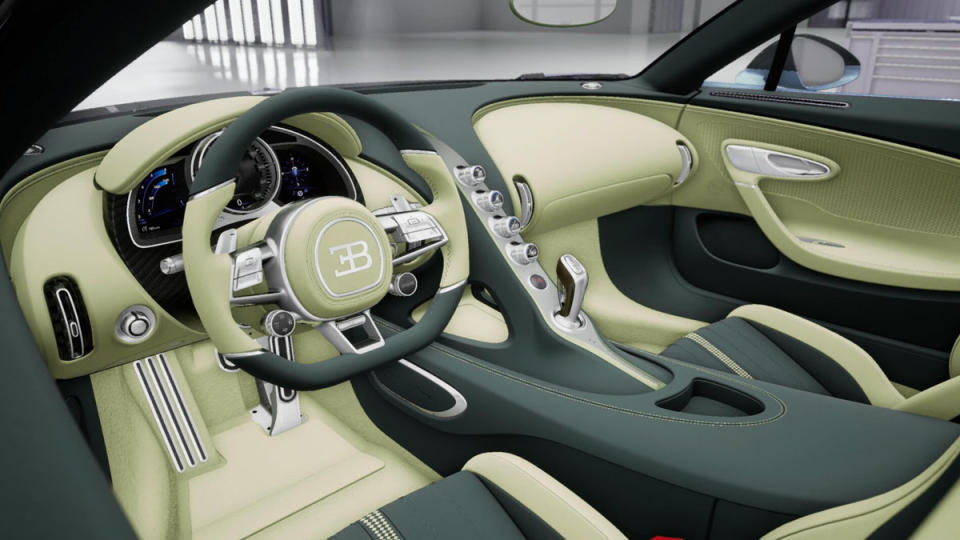
“You get a feeling when you talk to a customer,” says Straub. “If, for example, the customer is possibly interested in something historic related—an important car in the past, a certain race that Bugatti won. If they have a collection where they always stick to a certain color theme and a concept. But we also have customers that really come with a very, very clear idea. They come here and they tell you, ‘okay, I want a car this, that color, that logo.’”
Straub has a gentle means of guiding the conversation toward specs that will not embarrass either the buyer or the brand, honed through years of demurely managing the aspirational tastes of the global nouveau riche. “You cannot just say it’s not nice,” he explains. “But from a car designer’s perspective, you can always devise arguments like, ‘this makes the car look higher or not wide enough.’”
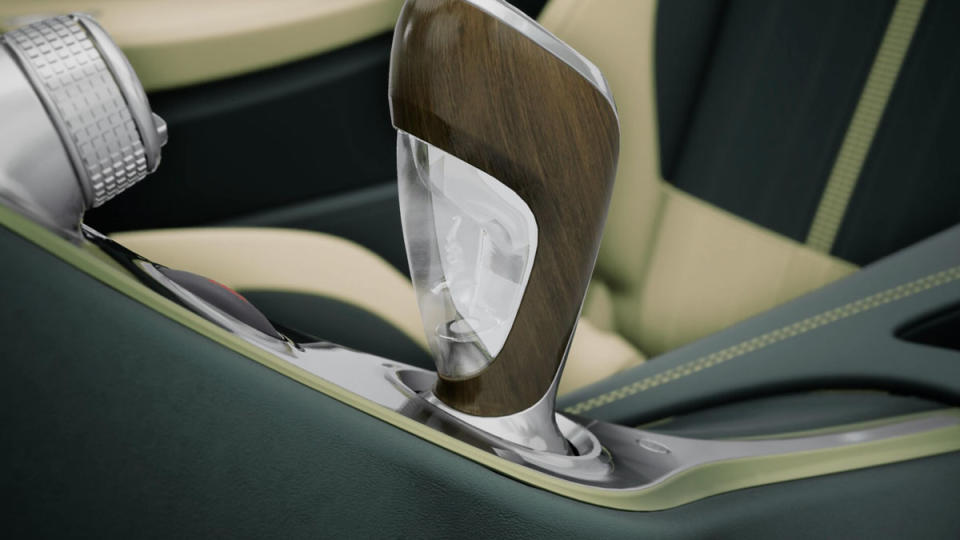
And how does he handle saying no to people unaccustomed to ever hearing this word? He just says it clearly. “If you just say yes to everything, and . . . ‘Oh, yeah, that looks beautiful,’ I think they feel it,” says Straub. Obsequiousness has its limits.
My personal inspiration was a historic vehicle from the brand’s first heyday, the Type 41 “Royale” Roadster. Only a very few of these Brobdingnagian convertibles—featuring a 21-foot length, a 12.7-liter straight-eight engine, and 24-inch wheels—were produced in the 1920s and 1930s. One of them ended up in the collection of the Henry Ford Museum outside of Detroit, Mich., where I grew up, and I recall standing in awe of it as a child. Sadly, that car had a rather bland white-over-green livery—a color scheme that does not suit my penchant for flash.
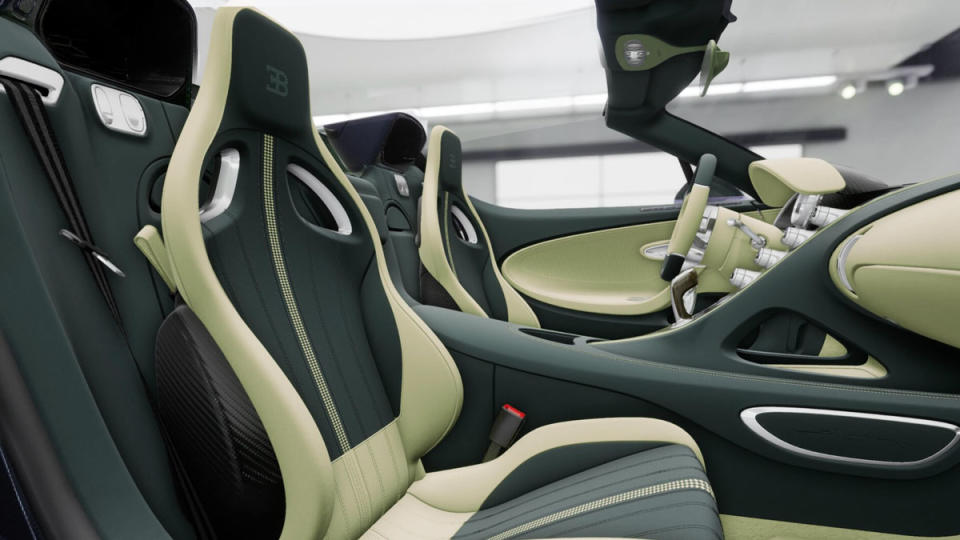
Digging deeper into the archives, Straub discovered a lost car that I found more stimulating and appropriate, a two-tone-green-over-ivory model famously photographed with scion Jean Bugatti. This lent itself perfectly to the Mistral, which, unlike most contemporary Bugattis—with their front/rear duotone color split—sports a horizontal line at its lower third that makes an ideal cut point for such a top/bottom palette.
On a graphically detailed configurator, I’m guided through every customizable aspect of “my” Mistral. This allowed me to select colors and materials for the car’s seats, door inserts, dashboard, stitching, steering wheel, interior trim, climate-control unit, gearshift, headrest logos, seatbelts, door sills, center console, dedication plate, mirrors, wheels, center caps, rear diffuser, exhaust deflector, rear logo, rear wing mechanics, rear wing underside, engine cover, and even custom luggage.
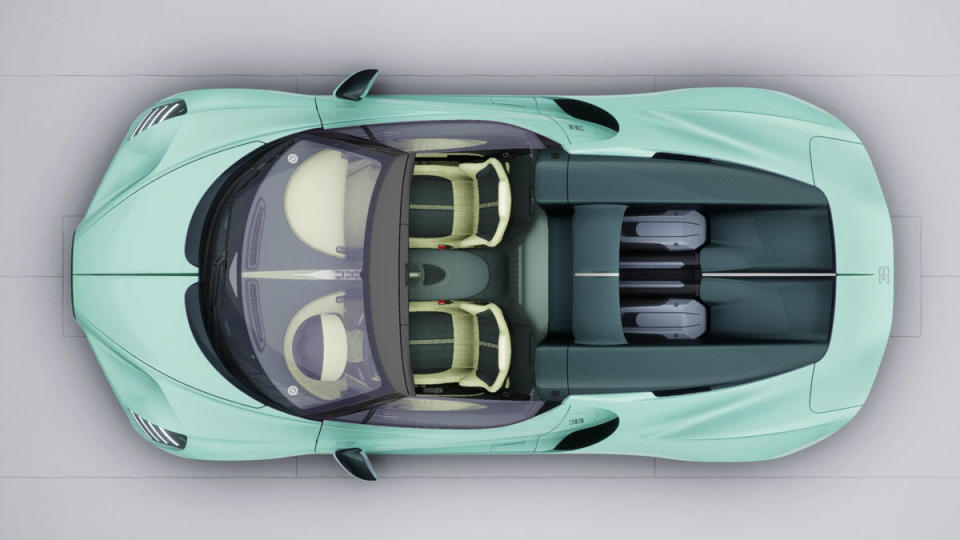
Working counter to my inner desire to have everything slathered in various shades of pink quartz and gold leaf, I went with classically elegant materials: lots of light leather and polished aluminum, woven leather trim bits, tone-on-tone colors hiding all insignia, a special wooden shift knob with a clear-crystal elephant embedded in its handle (because, why not?), and almost no fancy plastic, aka carbon fiber.
The result, as you can see, is swanky and sophisticated. It was only after the whole undertaking was finished that the realization hit me: I’d replicated the spec on my old Range Rover and Fiat 124 Spider. At least I’m consistent.
Best of Robb Report
Sign up for Robb Report's Newsletter. For the latest news, follow us on Facebook, Twitter, and Instagram.

